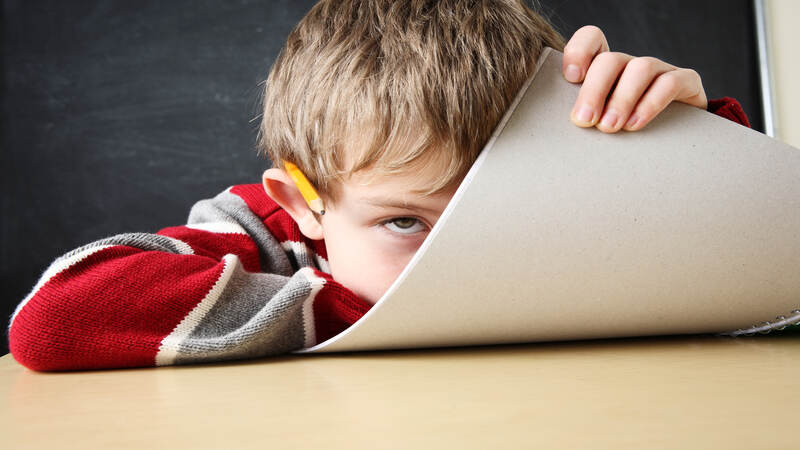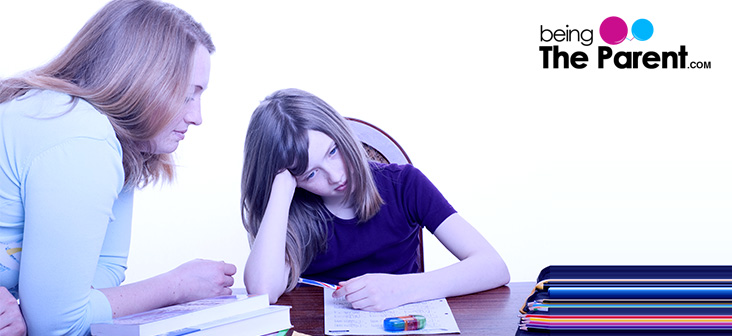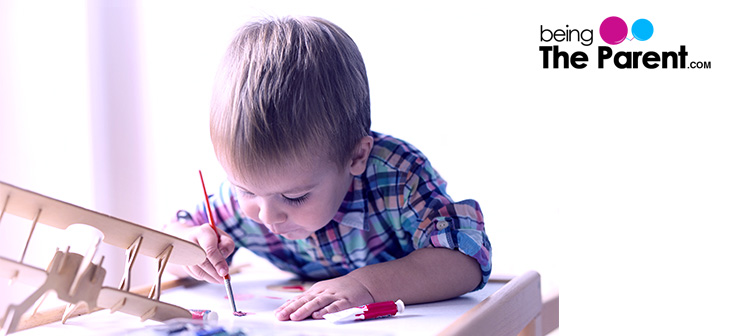
All parents wish their children to be adorable, clever, talented and well behaved. A troublesome child who is not easily manageable and has issues with concentrating and understanding is a big worry for the parents, no doubt. There are different reasons ranging from anxiety to psychological issues for this kind of behaviour. Continue reading to know more about one of such an issue- ADHD.
ADHD in children:
ADHD (Attention Deficit Hyperactivity Disorder) in children is a neurobiological issue that is characterised by behavioural challenges varying in intensity.
Types of ADHD in Children:
There are three types of ADHD in children:
- Predominantly Hyperactive/Impulsive:This type of ADHD is characterized by symptoms of impulsivity and hyperactivity. The child may display signs of inattention, but it’s not as distinguished as the other symptoms. Any child with this will show at least any six of the following symptoms:
- Moves too much, or feels fretful amid circumstances in which such conduct is wrong
- Experiences issues with anticipating turns
- Runs or moves at inappropriate times
- Talks excessively
- Gets up frequently even after being made to sit comfortably
- Wriggles with hands or feet, or squirms in seat
- Unable to play quietly and sit still.
- Experiences issues participating in relaxation exercises
- Starts to answer questions before the questions are completed or considering what question is being asked.
- Leaves seat in circumstances in which normally one should remain seated like when her has to listen to a teacher
- Predominantly Inattentive: Children with this type of ADHD exhibits more symptoms of inattention than those of impulsivity and hyperactivity. A child showing any six of the following signs are generally diagnosed with predominantly inattentive type of ADHD
- Making careless mistakes
- Getting distracted easily
- Unable to tune in
- Unable to focus and complete an errand
- Unable to comprehend the directions or simple instructions
- Keeps away from, shows less interest or is hesitant to take part in errands that require continual mental exertion
- Absent mindedness while executing daily routine
- Does not appear to listen when addressed specifically
- Has a very short attention span even when doing thing enjoyable activities
- Losing things that are important for tasks or school activities.
- Combined type: This is the most commonly found type of ADHD. Children with this type of ADHD show signs of both inattentive and hyperactive-impulsive types.

Is it really ADHD?
It is pretty hard to diagnose ADHD as some of the signs and symptoms of ADHD can be due to other medical or psychological issues as well. Subjecting the child to certain tests which rule out other medical problems signaling the same symptoms that of ADHD is used to diagnose ADHD. Also, the symptoms should satisfy some diagnostic criteria such as:
- Some of the symptoms shown by the child should be there before the child turns seven years.
- The child must have no less than six signs for no less than six months
- The child should show the signs in two or more settings like home, public places, school, playground etc.
- There must be clear confirmation of clinically noteworthy weakness in social, scholastic, and word related tasks.
Parenting Tips for a child with ADHD:
Raising a child with ADHD is a difficult task. It can be exasperating and tiresome to cope with the persistent impulsive behaviour of the child and when everyday tasks turn into battles starting from getting the child out the door in the morning to getting him to bed at night.
If you are a mother of a child with ADHD, the first thing that you should do is accept the fact that your child’s behaviour is not in her control and never expect her to behave like other kids. Even though it is challenging (both physically and emotionally) for a mother to raise her child with ADHD, with correct effort and methods you can decrease the troublesome symptoms of your kid and eventually make her face the world with confidence.Here are some parenting tips for an ADHD child:
- Set up a daily routine at home: Setting up a consistent schedules with regular expectations will be very helpful for the child for molding her into an organized lifestyle eventually. Write down (and strictly follow) specific times for waking up in the morning, doing things like brushing, toilet, bath etc., eating routine, watching TV, playing (specific time for both indoor and outdoor), doing homework, and finally, going to bed, on a board or chart paper. Hang it where your child will always see it. You can use sketches, drawings or images to indicate the activities if the child is not old enough to read. Any changes in the schedule should be clarified to the child in advance. Keep in mind that children with ADHD don’t adapt to change easily. Clearly explain the requirement of changes in the usual schedule and repeat if you have to, but with patience.
- Be positive with the child: Always be positive with the child. Use do’s more often than don’ts. That means instead of telling the child not to do certain things, talk about things that should be done. Selective attention is found to be very helpful in improving behavior while discouraging inappropriate behavior patterns. This can be done by paying attention to proper behavior by appreciating and rewarding and ignoring inappropriate behavior. By appreciating and giving rewards for positive behavior, you help your child feel successful. This will yield more positive results than punishing for inappropriate behavior. Slowly, the child will be able to control his behavior on his own.
- Encourage Exercise: Provide the child toys and encourage playing games that stimulates motor activities and intellectual development. ADHD child has excess energy. Physical activities not only burn the excess energy in a healthy manner, but also helps the child focus their attention on specific movements of hands and legs thereby improving the concentration. Eventually, the child will be able to get rid of signs of anxiousness.
- Make sure your directions are understood: You should make extra effort to ensure the child understands your directions clearly. At the same time while setting up the rules (home rules or study rules) teach him the significance of the rule and the consequences of the rule if broken. You can also prepare a chart with pictures or words for each rule and its significance and consequences if not obeyed. While explaining or giving direction to the child, make him sit or stand in front of you. Now talk unhurriedly in a clear and calm voice. Explanations or directions should be simple and short. The child will not be able to follow lengthy talks. Give one or at the most two directions at a time. Ask him to repeat your instruction. This way, her will be able to understand without difficulty.
- Be consistent: Be consistent with the child. Whether it is a warning or a promise, you should do keep up to your words to set correct examples for your little one. If you promise your child a gift if her completes a chore (which is a good means to urge the child to obey your directions) you should give it to him. Similarly, if you warn him to give him some punishment when she breaks some of the rules, punish him (the same punishment) as was explained. The ADHD child neither will understand how to wait patiently to get a delayed reward nor her will understand the repeated warnings.
- Help with school activities: School days are hard for an ADHD child. The child may take more time to eat food and dress up. Therefore, have enough enough time in hand during the school days. You can wake him up early, ready the school bag and dress the previous night itself. You can also offer small rewards or appreciate the child liberally if the child finishes morning routine fast during school days.
- Set up homework routine: Children with ADHD are prone to distractions. In order to complete school work, select a place (never change the place, let it be his permanent place for doing school work) that has nothing to distract the child. Break homework time into small parts and in between give the child enough breaks. During the break let her do what she enjoys. This way, the child develops interest in finishing the homework part by part for the fun breaks. Don’t hesitate to consult with teachers or other specialists whenever you feel it is necessary. Also, don’t follow the traditional school grades. Evaluate the child’s progress at their own rate.
- Take Breaks: Being a mother doesn’t mean you can be 100% supportive all day long. It is quite natural for the mother to feel agitated or frustrated while dealing with an ADHD child. Just as your child will need to take breaks while studying for not making the study a difficult task, you’ll need your own breaks as well for taking care of the child effectually. Find someone who can take care your child for a couple of hours and enjoy some “me time” to eliminate the stress and strain from your system.
- Believe in Your Child: Believe in your child and let the child know how much you are confident in him. Appreciating your child and displaying a positively behaviour in front of the child will boost his confidence level and encourage her to do better.

Positive effects of ADHD in children:
- Creativity: Children with ADHD tend to exhibit higher levels of creativity. This is because the impulsivity aids quick thinking elevating their power of imagination and innovation.
- Cognitive Flexibility: Cognitive flexibility refers to the capacity to swap thoughts between two different ideas or multiple concepts at the same time. Activities related to cognitive flexibility is a non-medicinal treatment method to help children with ADHD. These activities help with time management skills, organization skills, and also to achieve better levels of concentration. This makes the ADHD kid have more productive thoughts.
- Energy and drive: Children with ADHD often have a lot of energy. By helping them to channel the extra energy in track and field can reap success in sports. The ADHD children are found to be hyper focused on their interesting tasks, that they even forget what is happening around them. This makes the child have a determined urge to attain her goal faster.

